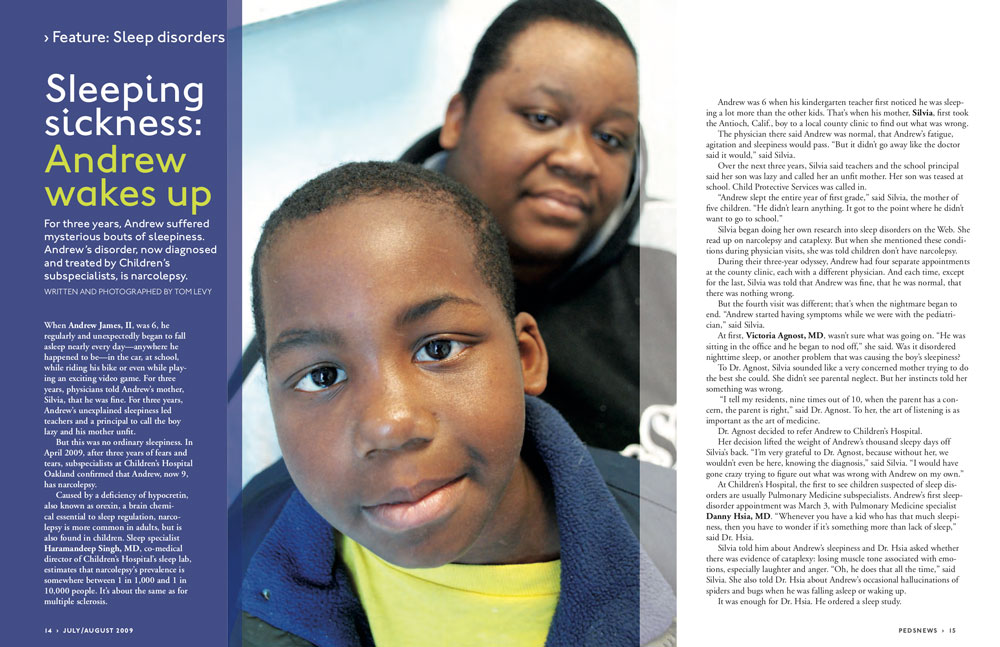
Sleeping Sickness
For three years, Andrew and his mother had no idea why he was constantly falling asleep. A sleep specialist finally put the pieces together: Andrew has narcolepsy.
PROJECT
Managed and edited all aspects of PEDSnews, a magazine published by UCSF Benioff Children’s Hospital for referring community physicians.
CLIENT
UCSF Benioff Children’s Hospital Oakland
ASSIGNMENT
Wrote and photographed article for PEDSnews about Andrew James, II and the Children’s Hospital clinician, Haramandeep Singh, MD, who successfully diagnosed and treated him.
When Andrew James, II, was 6, he regularly and unexpectedly began to fall asleep nearly every day—anywhere he happened to be—in the car, at school, while riding his bike or even while playing an exciting video game.
For three years, physicians told Andrew’s mother, Silvia, that he was fine. For three years, Andrew’s unexplained sleepiness led teachers and a principal to call the boy lazy and his mother unfit.
But this was no ordinary sleepiness. In April 2009, after three years of fears and tears, subspecialists at UCSF Benioff Children’s Hospital Oakland confirmed that Andrew, now 9, has narcolepsy.
Caused by a deficiency of hypocretin, also known as orexin, a brain chemical essential to sleep regulation, narcolepsy is more common in adults, but is also found in children.
Sleep specialist Haramandeep Singh, MD, co-medical director of Children’s Hospital’s sleep lab, estimates that narcolepsy’s prevalence is somewhere between 1 in 1,000 and 1 in 10,000 people. It’s about the same as for multiple sclerosis.

